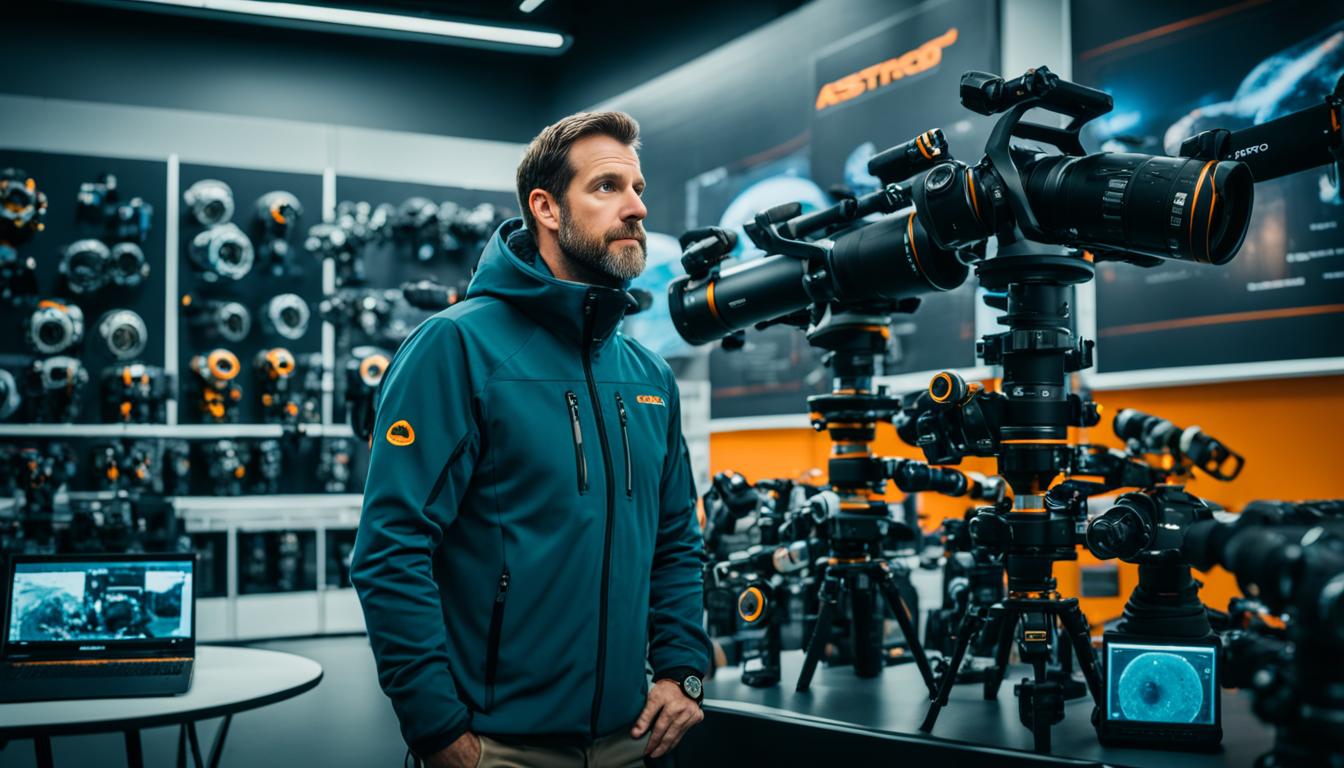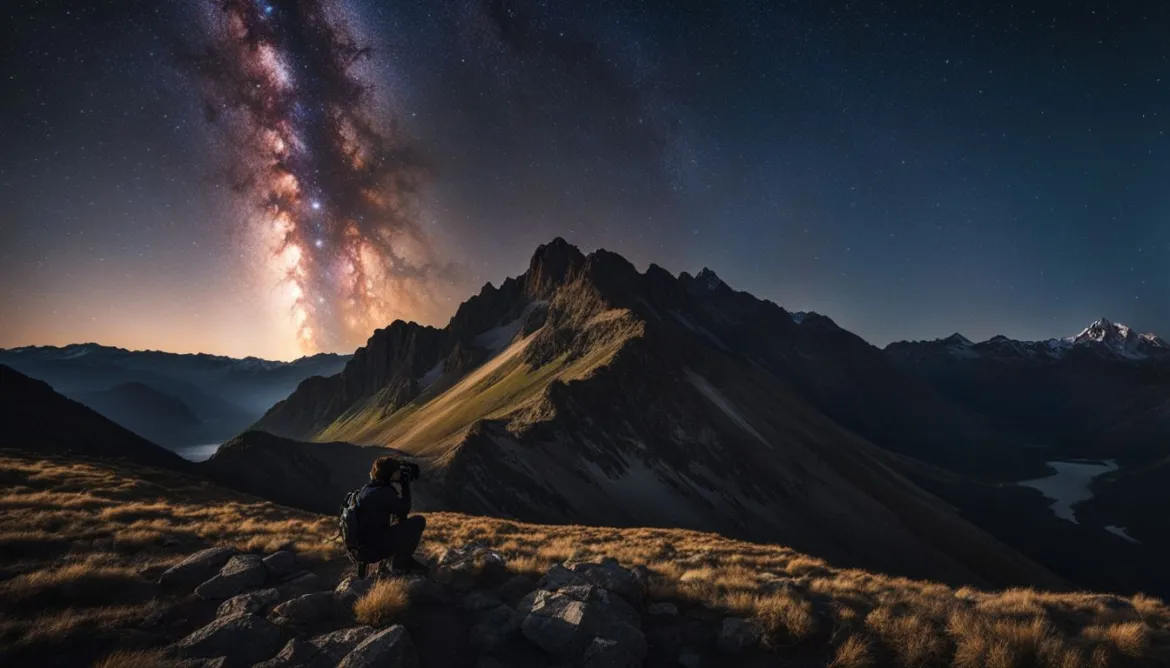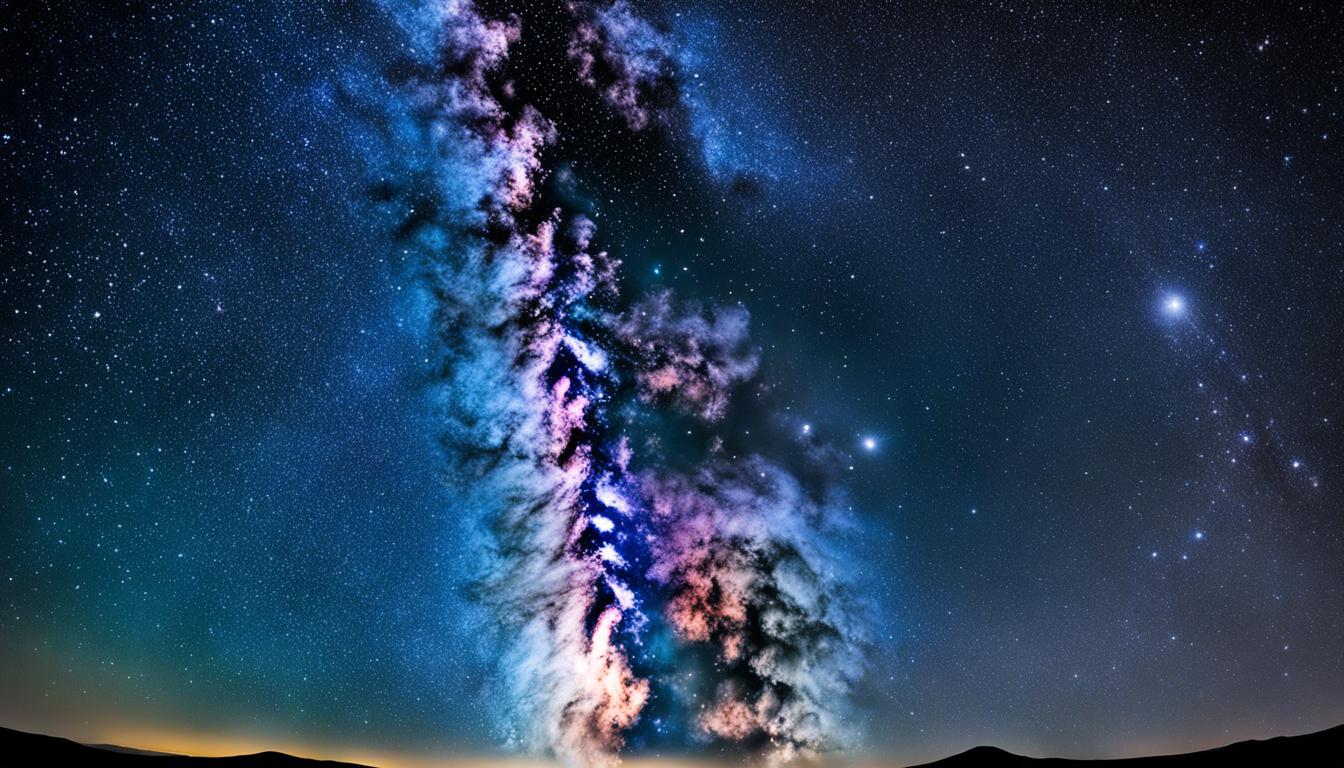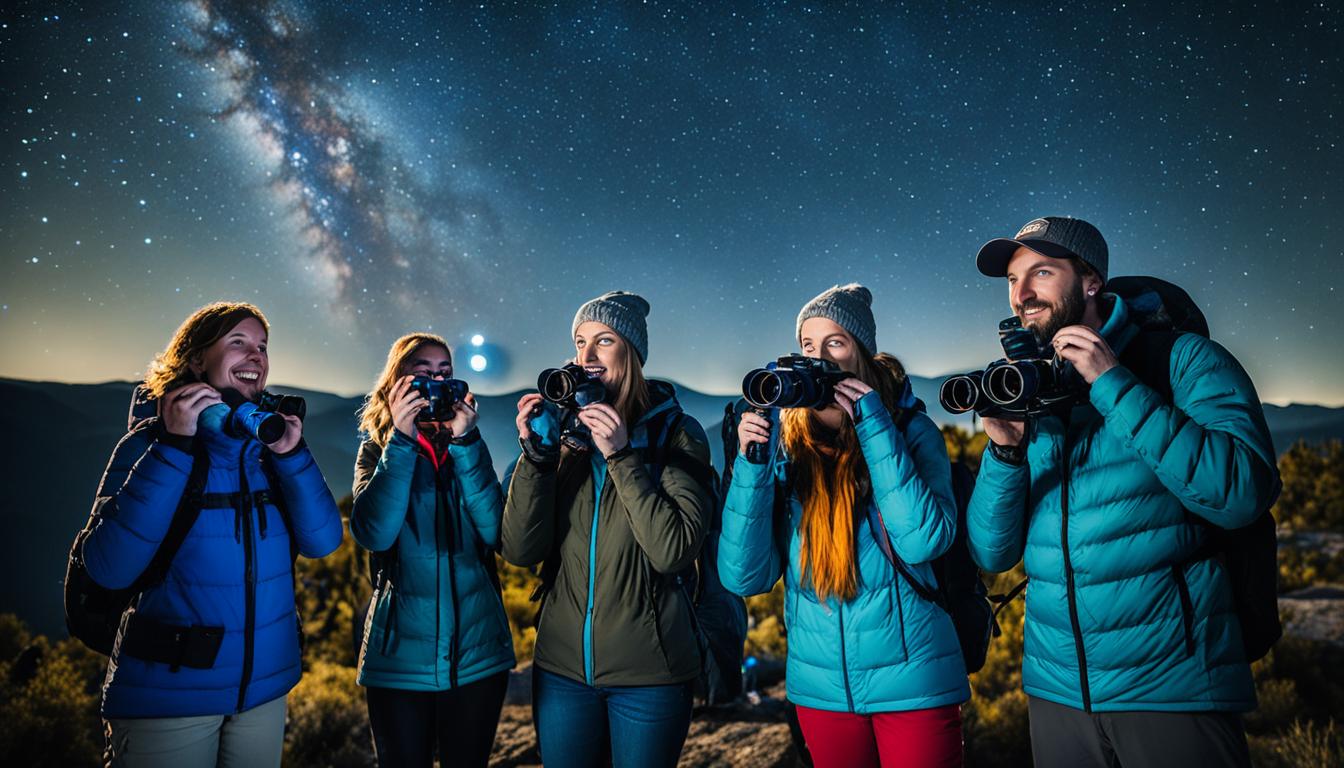Welcome to our Astro Gear Guide! If you’re passionate about astrophotography and ready to capture stunning images of the night sky, you’ve come to the right place. Choosing the right equipment is crucial to ensure optimal results and bring your astrophotography aspirations to life. In this guide, we’ll walk you through the essential gear you’ll need for successful astrophotography, as well as provide recommendations and tips to help you make informed decisions.
- Key Takeaway 1: Building a basic deep-sky astrophotography setup requires an equatorial tracking mount, a camera, and a telescope or lens.
- Key Takeaway 2: The choice of equipment depends on personal preferences and the specific goals of the astrophotographer.
- Key Takeaway 3: Beginners can start with a compact and lightweight apochromatic refractor telescope or a DSLR camera for budget-friendly options.
- Key Takeaway 4: The type of astrophotography equipment varies depending on the desired subjects, such as wide-angle Milky Way photography or high-magnification deep-sky imaging.
- Key Takeaway 5: Upgrade your gear with recommended astrophotography equipment for 2023, including mounts, telescopes, cameras, and accessories.
Building Your First Astrophotography Kit
When venturing into the fascinating world of astrophotography, it’s essential to have the right tools and accessories to capture stunning images of the night sky. In this section, we’ll guide you through the process of building your first astrophotography kit, ensuring that you have the essential equipment to get started.
Choosing the Right Mount
The foundation of your astrophotography kit is an equatorial telescope mount. This type of mount compensates for the Earth’s rotation, allowing you to track celestial objects accurately. For beginners, we recommend a sturdy but portable equatorial mount that can handle the weight of your equipment. Trusted brands like Sky-Watcher and Celestron offer reliable options.
Optimal Telescope and Camera Selection
A compact and lightweight apochromatic refractor telescope is an excellent choice for astrophotography, as it provides sharp and high-contrast images. Brands like William Optics and Askar offer top-notch options in this category. However, if you’re just starting out or on a budget, you can begin with a DSLR camera and a camera lens before investing in a telescope. DSLR astrophotography can produce impressive results and help you develop your skills.
The camera brand has minimal impact on your astrophotography potential, so choose a camera that you’re comfortable with or one that fits your budget. Dedicated astronomy cameras, such as those offered by ZWO and QHYCCD, are also excellent choices, providing advanced features specifically designed for astrophotography.
Exploring Portable Star Trackers
If you’re more interested in nightscape or wide-angle astrophotography, portable star trackers can be a valuable addition to your kit. These lightweight devices are designed to track the apparent motion of the stars, allowing you to capture long-exposure images without star trailing. Popular options include the Sky-Watcher Star Adventurer and the iOptron SkyGuider Pro.
Top Astrophotography Accessories
To enhance your astrophotography experience and image quality, consider adding the following accessories to your kit:
- Camera Filters: Filters, such as a light pollution filter or a narrowband filter, can help you capture specific wavelengths of light and reduce the impact of light pollution on your images.
- Guide Scope with Camera: Autoguiding is essential for capturing long-exposure images with pinpoint accuracy. A guide scope and camera combination, like the ZWO ASI290 Mini and a compatible guide scope, will assist in guiding your mount and improve tracking precision.
- Dew Heater: Dew can form on your telescope or camera lens, compromising image quality. Investing in a dew heater will prevent dew formation and keep your equipment dry throughout the imaging session.
- Power Source: Reliable power is crucial for uninterrupted astrophotography sessions. Consider a portable power source like the Jackery 500 Battery, which offers sufficient capacity to power your equipment for an extended period.
By selecting the right tools and accessories, you’ll be well-equipped to begin your astrophotography journey. Remember to continue learning, experimenting, and exploring different techniques to capture breathtaking images of the cosmos.
| Mount | Telescope | Camera |
|---|---|---|
| ZWO AM5 | William Optics RedCat 51mm | ZWO ASI 2600MC |
| SkyGuider Pro | Askar V | ZWO ASI 533MM |
| SkyWatcher EQ6R Pro | William Optics RedCat 71mm |
Types of Equipment for Astrophotography
When it comes to astrophotography, the type of equipment you choose will depend on the subjects you want to capture. Whether you’re interested in wide-angle Milky Way photography or high-magnification deep-sky imaging, there are specific gear recommendations to consider.
While a telescope may not be necessary for all types of astrophotography, it is essential for capturing detailed images of nebulae and galaxies. Refractor telescopes are popular for their compact size and superb image quality. They are ideal for astrophotographers who prioritize portability without compromising on performance.
On the other hand, Schmidt-Cassegrain telescopes offer impressive aperture and focal length, making them suitable for astrophotographers seeking higher magnification. However, they may present challenges in tracking and autoguiding accuracy.
Here is a breakdown of the different types of equipment:
- Refractor Telescopes: Compact and produce high-quality images.
- Schmidt-Cassegrain Telescopes: Offer greater magnification but may pose tracking challenges.
- Camera Lenses: Ideal for wide-angle astrophotography before investing in a telescope.
As you consider your options, it’s important to align your choice of equipment with your personal interests and astrophotography goals. By selecting the right gear, you can capture stunning images of the night sky that showcase the wonders of the universe.

Recommended Gear for 2023
When it comes to astrophotography, having the right gear can make all the difference in capturing stunning images of the night sky. In 2023, we recommend the following gear to enhance your astrophotography experience:
ZWO AM5 Mount
The ZWO AM5 mount is a reliable and versatile choice for astrophotographers. It offers go-to functionality, a lightweight design, and a powerful harmonic drive, making it an excellent option for both beginners and advanced photographers.
ASIAir Plus/Mini for Control
The ASIAir Plus/Mini provides seamless control over your astrophotography setup. With its user-friendly interface and wireless control capabilities, it simplifies the process of capturing and managing your images, allowing you to focus on the creative aspects of astrophotography.
Askar V/RedCat 51mm/RedCat 71mm Telescopes
For telescopes, we recommend the Askar V, RedCat 51mm, and RedCat 71mm. These telescopes offer sharp and compact designs, allowing you to capture detailed images of celestial objects. The RedCat series provides excellent zoom and aperture capabilities, while the Askar V offers a unique modular design for versatility in capturing different targets.
ZWO ASI 2600MC/ASI 533MM Cameras
When it comes to cameras, the ZWO ASI 2600MC and ASI 533MM are top choices for astrophotography. These cameras offer high-resolution imaging capabilities, allowing you to capture the intricate details of nebulae, galaxies, and other celestial objects.
In addition to the main gear, there are several essential accessories that can further enhance your astrophotography setup. These include camera filters, guide scopes with cameras for precise tracking, dew heaters to prevent condensation, and a reliable power source such as the Jackery 500 Battery to keep your equipment running smoothly throughout the night.
This recommended gear for 2023 provides a lightweight and portable setup suitable for beginners, while still offering plenty of objects to capture. As you gain experience and master the basics, you can consider upgrading to a larger telescope or exploring other accessories to further expand your astrophotography capabilities.
| Recommended Gear for 2023 |
|---|
| ZWO AM5 Mount |
| ASIAir Plus/Mini for Control |
| Askar V/RedCat 51mm/RedCat 71mm Telescopes |
| ZWO ASI 2600MC/ASI 533MM Cameras |
| Camera Filters |
| Guide Scopes with Cameras |
| Dew Heaters |
| Jackery 500 Battery |
This recommended gear combination provides a comprehensive astrophotography setup, allowing you to capture breathtaking images of the night sky. Remember, the gear you choose should align with your personal preferences and goals as an astrophotographer, so feel free to explore different options and find what works best for you.
Astrophotography Mounts
When it comes to choosing the right astrophotography mount, several options stand out as reliable and popular choices. Let’s explore three of the best astrophotography mounts currently available in the market:
ZWO AM5
The ZWO AM5 is a standout option for astrophotography enthusiasts. It offers go-to functionality, allowing you to easily navigate the night sky and capture precise images. With its lightweight design, it provides portability without compromising on performance. The ZWO AM5’s powerful harmonic drive ensures smooth and accurate tracking, resulting in stunning astrophotography. What’s more, you can control the mount entirely from your smartphone or tablet, providing convenience in the field.
SkyGuider Pro
The SkyGuider Pro is an excellent choice, especially for beginners in astrophotography. It offers a user-friendly interface and straightforward setup, making it accessible for those new to the hobby. The mount’s compact size and weight make it portable and easy to carry around. However, it’s important to note that the SkyGuider Pro may have limitations when it comes to longer exposures and tracking precision. As your skills advance, you may find the need to upgrade to a more sophisticated mount.
SkyWatcher EQ6R Pro
The SkyWatcher EQ6R Pro is known for its exceptional performance and reliability. It offers advanced tracking capabilities that enable longer exposures, perfect for capturing detailed images of celestial objects. However, compared to the other mounts mentioned, the EQ6R Pro requires a bit more setup and familiarization. The mount’s robust build ensures stability during imaging sessions, providing the necessary support for heavier telescopes and equipment. If you’re looking for a mount that can handle more demanding astrophotography tasks, the SkyWatcher EQ6R Pro is an excellent choice.
Ultimately, the choice of astrophotography mount depends on your specific needs, experience level, and budget. Whether you opt for the lightweight and versatile ZWO AM5, the beginner-friendly SkyGuider Pro, or the high-performance SkyWatcher EQ6R Pro, each mount offers unique features to enhance your astrophotography journey.

Astrophotography Telescopes
When it comes to astrophotography, choosing the right telescope is crucial for capturing stunning images of the night sky. Here are our top recommendations for astrophotography telescopes:
1. William Optics RedCat 51mm
The William Optics RedCat 51mm is known for its sharp and compact design, making it a great choice for astrophotographers on the go. This apochromatic refractor telescope provides excellent image quality and is well-suited for wide-field astrophotography. With a focal length of 250mm and a fast focal ratio of f/4.9, the RedCat 51mm is perfect for capturing detailed images of nebulae and galaxies.
2. William Optics RedCat 71mm
For astrophotographers looking for more zoom and aperture, the William Optics RedCat 71mm is an excellent option. With a focal length of 350mm and a fast focal ratio of f/4.9, this telescope allows for capturing even more detail in your images. The RedCat 71mm provides a larger field of view compared to the 51mm, making it suitable for both wide-field and closer deep-sky astrophotography.
3. Askar V Modular Telescope
If versatility is what you’re after, the Askar V modular telescope is a standout choice. This unique telescope allows for different focal lengths and configurations, making it adaptable to various astrophotography targets. With a maximum focal length of 500mm and a focal ratio of f/5.6, the Askar V provides a balance between wide-field and high-magnification imaging.
When selecting an astrophotography telescope, consider factors such as focal length, aperture, and personal preferences. Each of these telescopes offers its own advantages and capabilities, so choose the one that aligns with your specific goals and style of astrophotography.
| Telescope | Focal Length | Focal Ratio |
|---|---|---|
| William Optics RedCat 51mm | 250mm | f/4.9 |
| William Optics RedCat 71mm | 350mm | f/4.9 |
| Askar V Modular Telescope | Up to 500mm | f/5.6 |
Tripods and Mounts
When it comes to astrophotography, having a stable base for your equipment is crucial. Tripods and mounts play a significant role in achieving sharp and detailed images of the night sky. In this section, we’ll discuss the considerations for choosing the right tripod and mount for your astrophotography endeavors.
Choosing the Right Tripod
A sturdy tripod is essential to prevent any movement or vibrations that can negatively impact the quality of your astrophotos. When selecting a tripod, there are a few key factors to keep in mind:
- Load Capacity: Determine the weight of your camera, lens, and any additional accessories you plan to use. Choose a tripod with a load capacity that comfortably supports your gear.
- Sturdiness: Look for a tripod made from high-quality materials, such as aluminum or carbon fiber, that provide stability and durability.
- Portability: Consider the weight and size of the tripod, especially if you plan to travel to different locations for your astrophotography outings. Lightweight and compact tripods are ideal for easy transportation.
- Compatibility: Ensure that the tripod you choose is compatible with the mount you’ll be using. Check for the appropriate mounting plate or adapter.
Choosing an Astrophotography Mount
The mount is the foundation of your astrophotography setup and plays a critical role in tracking celestial objects accurately. There are two main types of mounts commonly used in astrophotography:
Az-Alt Mounts: These mounts, short for Azimuthal-Altitude mounts, are often recommended for beginners due to their simplicity and ease of use. They offer quick setup and intuitive controls, making them ideal for capturing wide-angle shots of the night sky. However, they may have limitations when it comes to longer exposures and tracking performance.
Equatorial Mounts: Equatorial mounts are designed to align with the Earth’s axis, allowing for more accurate tracking of celestial objects. They are particularly suitable for capturing deep-sky objects and extended exposures. Equatorial mounts do require a bit more setup and calibration, but they offer superior tracking performance and long-exposure capabilities.
When choosing an astrophotography mount, consider your experience level, desired subjects, and long-term goals in the hobby. Here are some trusted brands known for their reliable astrophotography mounts:
- Sky-Watcher
- Celestron
- Ioptron
- Orion
By selecting a reputable brand and understanding your specific astrophotography needs, you can make an informed decision when choosing the right mount for your setup.
Conclusion
Choosing the right equipment for astrophotography is a personal decision based on your individual preferences and goals. A basic setup typically includes an equatorial mount, telescope or lens, and a camera. These essential components provide the foundation for capturing stunning images of the night sky.
However, it doesn’t stop there. Upgrading and adding accessories can further enhance your astrophotography experience. Accessories such as camera filters, guide scopes with cameras, dew heaters, and a reliable power source can greatly improve tracking, automate your imaging sessions, and enhance overall image quality.
When starting out, it is important to match your equipment to your desired subjects and skill level. Beginning with a setup that suits your interests and abilities allows for a more enjoyable and successful learning experience. As your skills and interests evolve, you can gradually progress to more advanced equipment and techniques.
For those looking for recommendations, the recommended gear for 2023 includes the ZWO AM5 mount, various telescopes like the Askar V and the RedCat series, and cameras such as the ZWO ASI 2600MC and ASI 533MM. These choices offer the latest advancements in astrophotography technology and are sure to support your vision as an astrophotographer.
In conclusion, choosing the right equipment for astrophotography is an exciting journey. By starting with a basic setup, gradually upgrading, and adding accessories, you can capture stunning and awe-inspiring images of the night sky that reflect your passion and vision as an astrophotographer.
FAQ
What equipment do I need for astrophotography?
A basic astrophotography setup includes an equatorial tracking mount, a camera, and a telescope or lens. Additional accessories can be added to improve tracking and automate the imaging session.
What camera should I use for astrophotography?
For beginners, a DSLR camera or a dedicated astronomy camera is recommended. The choice of camera brand has minimal impact on astrophotography potential.
Do I need a telescope for astrophotography?
While a telescope is not necessary for all types of astrophotography, it is essential for capturing detailed images of nebulae and galaxies. Refractor telescopes and Schmidt-Cassegrain telescopes are popular choices.
What are the recommended gear for astrophotography in 2023?
Recommended gear for 2023 includes the ZWO AM5 mount, ASIAir Plus/Mini for control, Askar V/RedCat 51mm/RedCat 71mm telescopes, and ZWO ASI 2600MC/ASI 533MM cameras.
What mounts are suitable for astrophotography?
Options for astrophotography mounts include the ZWO AM5, SkyGuider Pro, and SkyWatcher EQ6R Pro. Each mount has its unique features and advantages.
Which telescopes are recommended for astrophotography?
Recommended telescopes for astrophotography include the William Optics RedCat 51mm and RedCat 71mm, and the Askar V modular telescope. The choice of telescope depends on factors such as focal length, aperture, and personal preferences.
What should I consider when choosing a tripod for astrophotography?
Considerations when choosing a tripod for astrophotography include load capacity, sturdiness, portability, and compatibility with the mount. A sturdy tripod is essential to prevent movement and vibrations.
How do I choose the right equipment for astrophotography?
Choosing the right equipment for astrophotography is a personal decision based on individual preferences and goals. It is important to start with a setup that matches the desired subjects and skill level, and gradually progress as skills and interests evolve.
How Can the Right Equipment Help in Astrophotography Planning?
When it comes to astrophotography planning, having access to top astrophotography apps & resources can make all the difference. These tools can provide valuable information on celestial events, optimal shooting locations, and even help with camera settings. With the right equipment and these resources, capturing stunning images of the night sky becomes much more achievable.




